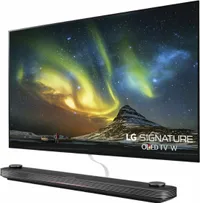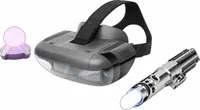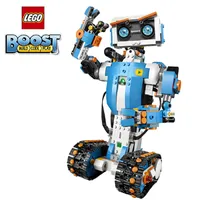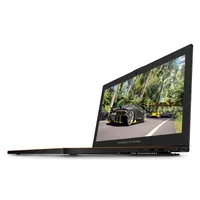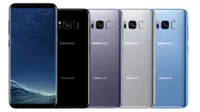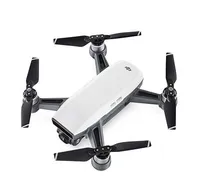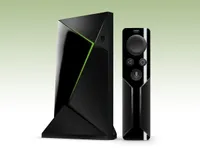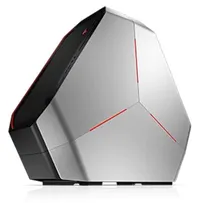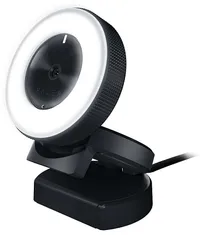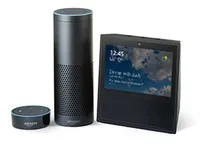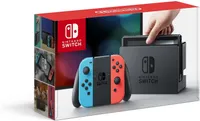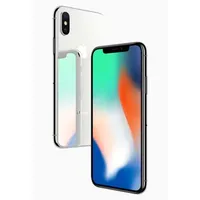Most Innovative Tech of 2017
From the iPhone X and Nintendo Switch to a drone you can control with your hand, these are the most innovative tech products of the year.
This Year's Biggest Game Changers
What really broke new ground in 2017? What was more than just an iterative update, instead building upon what came before in an exciting new way? These are just some of the questions we asked ourselves as the Tom's Guide staff debated the merits of hundreds of products we tested and reviewed this year to arrive at our first annual Innovation Awards.
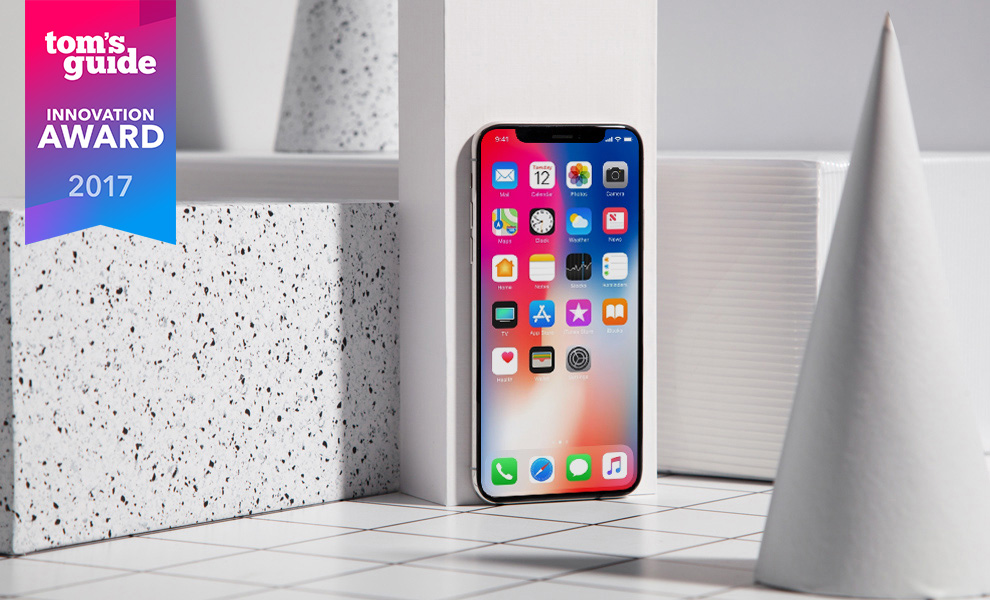
The 14 winners you see here truly represent game changers in multiple categories, from a console that redefines the category and a robot that teaches kids to code to a phone that takes artificial intelligence to new heights. On our list, you'll also find some under-the-radar innovations that simply deserved more attention this year, including a drone you can control with your hand and a game that explores mental illness.
There's a compelling story behind each of these breakthroughs, which is why we spoke with the people working in the trenches to find out how these creations became a reality. These are the most innovative tech products of the year.
Tom’s Guide 2017 Innovation Award Winners
TV — LG Signature OLED TV
Augmented Reality — Star Wars: Jedi Challenges
Kids — Lego Boost
Graphics — Nvidia Max-Q
Design — Samsung Galaxy S8
Drone — DJI Spark
Game — Hellblade: Senua's Sacrifice
Entertainment — Nvidia Shield
CPU — AMD Threadripper
Tablet — reMarkable Tablet
Peripheral — Razer Kiyo
Smart Home — Amazon Alexa and Echo
Game Console — Nintendo Switch
Best Overall — iPhone X
LG Signature OLED TV W7: Beware of Papercuts
It’s hard to stand out in a market where stunning is the norm. Yet, somehow, among a wave of ultra-sharp 4K displays and sleek premium designs, LG has managed to introduce a product that stands out. The W7 Wallpaper TV not only pushes the envelope with an unbelievably thin design, it delivers a drop-dead gorgeous picture at the same time.
The Wallpaper boils the modern TV down to its essence, stripping away everything but the display. With LG’s display-on-glass technology, the display panel is slim and beautiful. First seen at CES 2017, the Wallpaper — starting with the flagship W7 OLED that won our Best of Show award — measures just 2.85 millimeters thick, and mounts to the wall with magnets. It comes with a soundbar, which not only holds the system’s impressive 60-watt Dolby Atmos speakers, but also all of the internal components that normally make up the bulk of a regular TV. All of the inputs and outputs, the power supply, and the media processing components are housed in the speakerbar, stripping the display panel down to the bare essentials. The two are connected with a thin ribbon cable that can be installed completely out of sight.
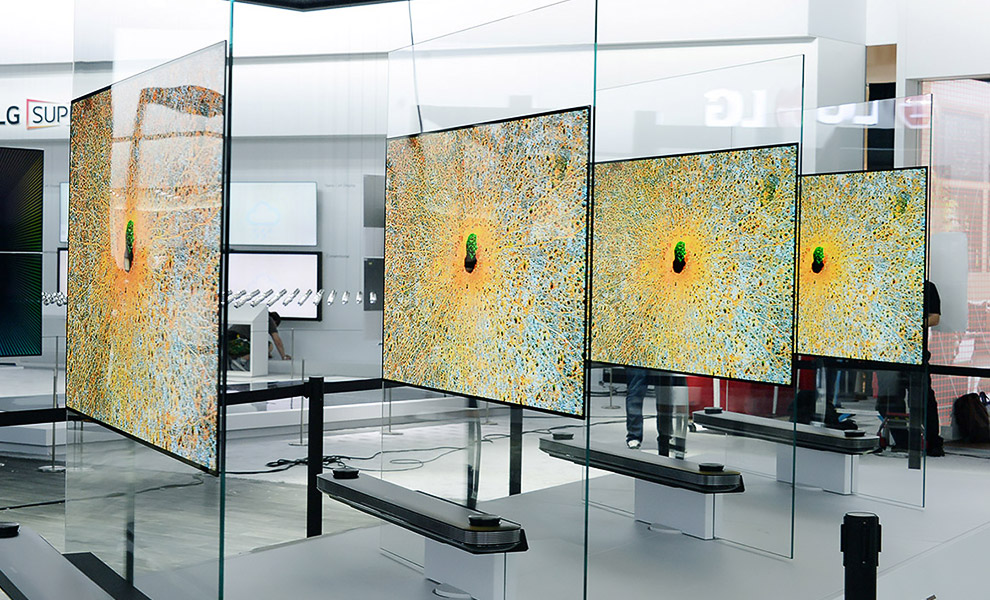
When it comes to the Wallpaper, that ultra-thin form factor is only possible because of LG’s advancements in OLED displays. “There was never a question that the W7 would feature OLED technology,” said Tim Alessi, Senior Director of Product Marketing at LG Electronics USA. “To truly achieve the picture-on-wall concept, LG OLED technology was imperative because the pixels create their own light, eliminating the need for a backlight and associated filters and diffusers necessary for an LCD, all of which add bulk to the panel.”
Get instant access to breaking news, the hottest reviews, great deals and helpful tips.
All that’s left is the display, presented in stark simplicity. The result has been as popular as it is stunning, and LG doesn’t see it going away anytime soon. “The critical and consumer response has been fantastic,” said Alessi, “proving that there is demand for this type of concept, which will drive future design and technological innovation.” — Brian Westover
Star Wars Jedi Challenges: Be a Jedi, You Will
Call it the Force. Call it midi-chlorians. But whatever you call it, you've got to admit that Star Wars in all its iterations has some sort of magic surrounding it — the sort of magic that's enraptured legions of fans over the span of decades, melding them into today's rabid fanbase.
And who better than Disney to harness that magic and turn it into something truly innovative: a device that brings that beloved galaxy far, far away closer than ever before.
Partnering with Lenovo, Disney recently launched Star Wars: Jedi Challenges, a smartphone-powered, augmented-reality headset. Complete with tracker beacon and lightsaber hilt, the $199 Jedi Challenges lets the Force Faithful travel the road from Padawan to Master via three fun, compelling games: Lightsaber Battle, Strategic Combat and Holochess. But before the games could begin, Disney had critical decisions to make and challenges to overcome.
After settling on a lightsaber-focused experience, the next challenge for Mike Goslin, vice president of advanced development at Disney, and his team was how to make it affordable with plenty of mass appeal. Early on, the team decided that a smartphone-powered device was the way to go.
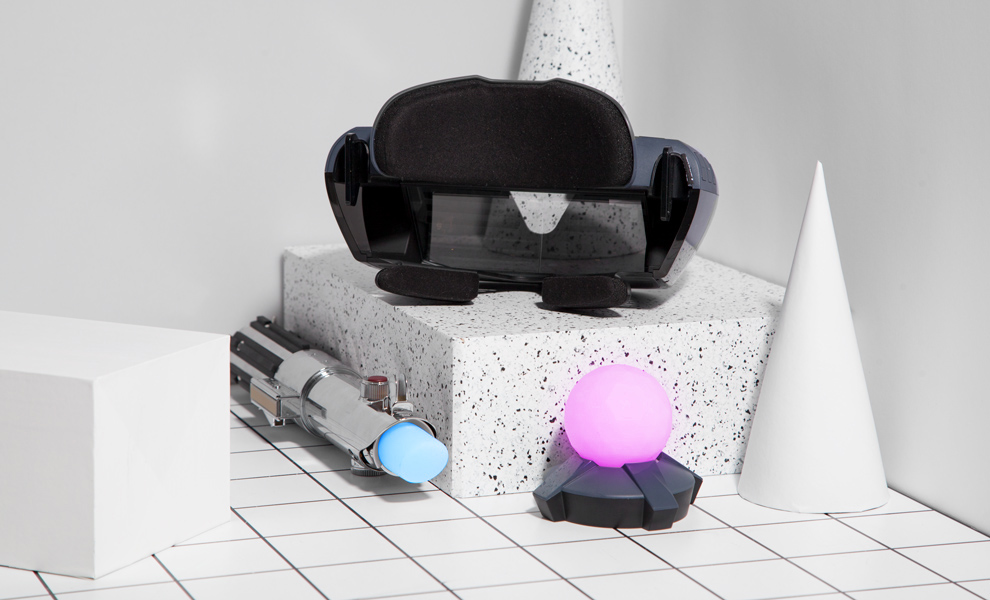
"We decided to go with a slip-in mobile device and focus on making that great. The rest of it is … [the] experience," Goslin said. "We knew exactly what mattered from a tech-features standpoint and what didn't matter. So that allowed us to really hone in on this experience and not have any extra features or cost that weren't critical to delivering the best possible lightsaber."
"It took months of testing to properly identify and translate a lightsaber duel into an augmented-reality experience." — Mike Goslin, vice president of advanced development, Disney
To create the perfect lightsaber, Lenovo worked closely with Disney to nail down the authenticity. Even though the majority of the hilt is made of plastic, according to Goslin, the team "added extra weight, just so it felt a little more substantial — not so much that it tires you out to hold it, but we wanted it to feel right. From there, it took months of testing to properly identify and translate a lightsaber duel into an augmented-reality experience." And having spent several hours dueling Sith Lords, I can attest to the addictive nature of the experience and the sheer, unadulterated fun.
Once Disney had the dueling down pat, allowing you to fight against everyone from Kylo Ren to Darth Vader, it was time to flesh out the overall experience. Goslin revealed that about a half dozen other gameplay prototypes were developed before they settled on Strategic Combat and Holochess. "Focusing [on] a different kind of wish fulfillment that's fun to play, Goslin said, "we knew [Strategic Combat] was deep and had a lot of hours of play."
The addition of Holochess is a fun piece of fan service from Star Wars: Episode IV - A New Hope — an iconic moment in the original trilogy that's on-screen for only a few seconds. "I've always wanted to kind of get closer to it, and I think there are a lot of people that feel the same way," Goslin said. "So we kind of had to do that one because it was so exciting for fans of the films, and we were able to turn it into quite a deep game itself."
As fun as Star Wars: Jedi Challenges has been to date, it's clear that Disney has more in store for Star Wars fans. "We see this as a really long-term opportunity, so we wanted to create engagement beyond just the novelty of 'Hey, check out this lightsaber,'" Goslin said. "So it was actually very important to us, and I think ... the bar is going to rise within this space … AR and VR are just getting started." — Sherri L. Smith
Lego Boost: Making Coding Fun (Really)
There are a lot of robot kits for kids, but Lego Boost stands out by making it easy and fun for young children to learn programming concepts. The $159 kit comes with enough bricks for children to build their choice of five different robots or to invent their own.
However, what really stands out is not the physical design of the bricks and motors, but the accompanying mobile app that helps kids learn how to code, even if they don't know how to read yet.
"The Lego Boost app introduces a coding language that is designed to be intuitive and familiar to children, much like a digital version of the physical Lego brick," said Michael McNally, senior director of brand relations at Lego Group. "We developed the coding language specifically to be fun and accessible to children, and to reward them with quick successes."
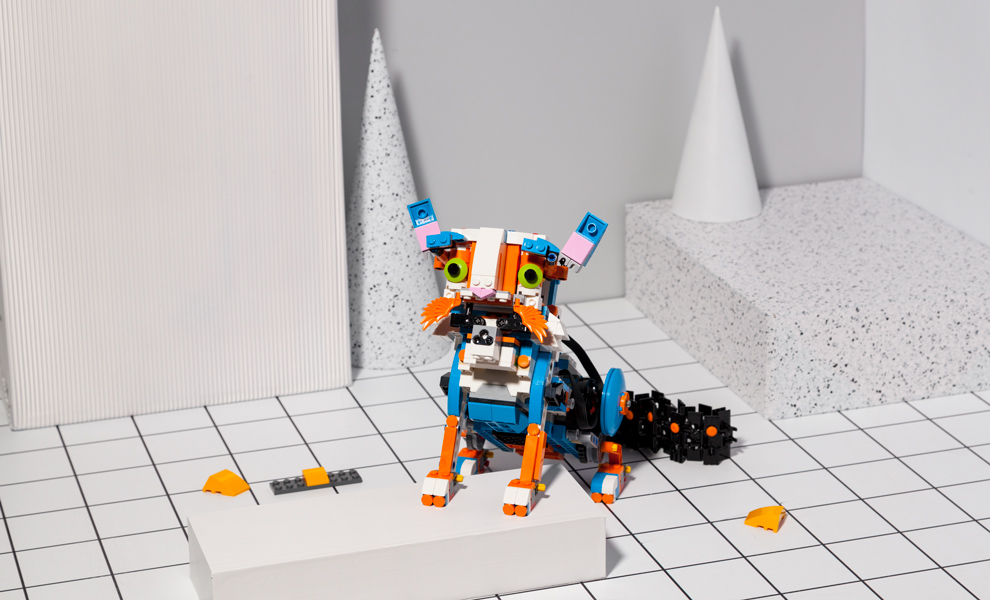
Available for Android, iOS and some Amazon tablets, the Lego Boost app walks users through different stages of building one of the five bots — the robotic cat, for example. As the child completes each stage of the build, a virtual hand shows the young programmer just where to drag a series of simple coding blocks so that he or she can learn concepts such as functions and loops, without being hit over the head with jargon.
In fact, there's no written or spoken language in the Lego Boost interface at all; every block shows its purpose by displaying cute icons such as a harmonica for playing music. Even my preliterate five-year-old was programming within minutes.
As children complete the different build and programming steps, they unlock new levels that teach them more skills and put more code blocks into the treasure chest, which is a repository of functions they can use to make their own custom programs.
"By introducing kids to coding as a means to an end — that is, the way they bring their Lego builds to life — we can reward their successes easily and encourage them to continue tinkering," McNally said. — Avram Piltch
Nvidia Max-Q: Gaming Goes Thin
Picture a gaming notebook. It's probably very thick, it gets really hot and it's extremely loud. But after this year, it doesn't have to be that way. That's the philosophy behind Max-Q, Nvidia's new line of notebook GPUs, which are combined with a design philosophy to allow powerful, quiet gaming in a thin notebook.
“Historically, we had this approach where you crank everything to the max because you're chasing the most amount of performance — not quite to this extent, but everything else be damned," said Mark Aevermann, Nvidia's director of product management for gaming. “When you start to take a different lens and say, ‘How do you find the most efficiency?' you can start changing every single assumption you built into the GPU over 20 years of design."
Aevermann said that Max-Q, as well as many other technologies developed by Nvidia, come out of “sympathy for the end user." In this case, it was for users faced with thick, heavy gaming laptops that would get really loud. So how do you make lives better for gamers on the go? Make lots and lots of tiny adjustments.
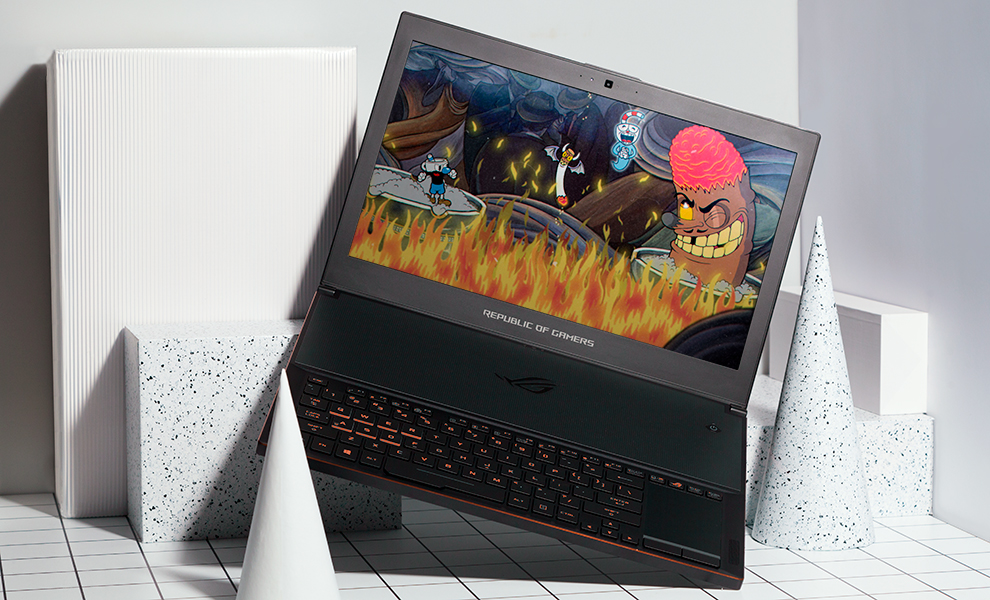
“Jensen [Huang, Nvidia CEO], once in early stages of Max-Q, framed it in a way that stuck with me," Aevermann recalled. “He basically said, ‘I want dozens and dozens of half a percent and 1-percent improvements.' And when you add them all together, all of a sudden it becomes pretty incredible."
This, along with collaboration with laptop vendors, has allowed for superthin, ultraquiet gaming laptops like the Asus ROG Zephyrus, MSI GS63VR Stealth Pro and Acer Predator Triton 700 — all of which are less than an inch thick. That's where what Nvidia calls the “design philosophy" of Max-Q comes in. For vendors, it's another series of “ 1-percent improvements," like redesigning a chassis for better thermal management. And while the Max-Q GPUs might not be as powerful as traditional ones, the difference in the physical notebook is immediately obvious.
Max-Q has competition coming in 2018. Intel and AMD have announced initiatives to bring powerful graphics to thin notebooks. AMD will have its Vega APUs in Ryzen Mobile notebooks and will provide integrated graphics for some Intel 8th Gen Core CPUs. Nvidia, Aevermann said, is at an advantage because the company has been focused on that goal for years.
“I'll defer to you to make your judgments if they'll be competitive or not," he said. “All I can say from an Nvidia perspective is that this is not something we woke up in the last six months and decided we wanted to go fix." — Andrew E. Freedman
Samsung Galaxy S8: Infinitely Beautiful
Design matters. Need proof? Samsung says Galaxy S8 owners use their phones for 40 more minutes a day than Galaxy S7 owners do, while S8+ owners use their devices 75 more minutes than S7 Edge owners do. To understand why, you needn't look further than the revolutionary Infinity Display on the newer phones.
Samsung wasn't the first company to launch a smartphone with an 18:9 screen and minimal bezels; that designation belongs to LG and its G6, which beat the Galaxy S8 to the market by a month. But Samsung set the benchmark for extra-wide screens.
The S8's display was the product of years of research and development, drawing on everything that the company had learned producing curved displays at scale all the way back to 2014's Note Edge tablet. Only, this wasn't a niche one-off or a premium variant; with the S8, Samsung stuffed curved Super AMOLED panels and shrinking bezels in each and every flagship handset that rolled off the company's production line.
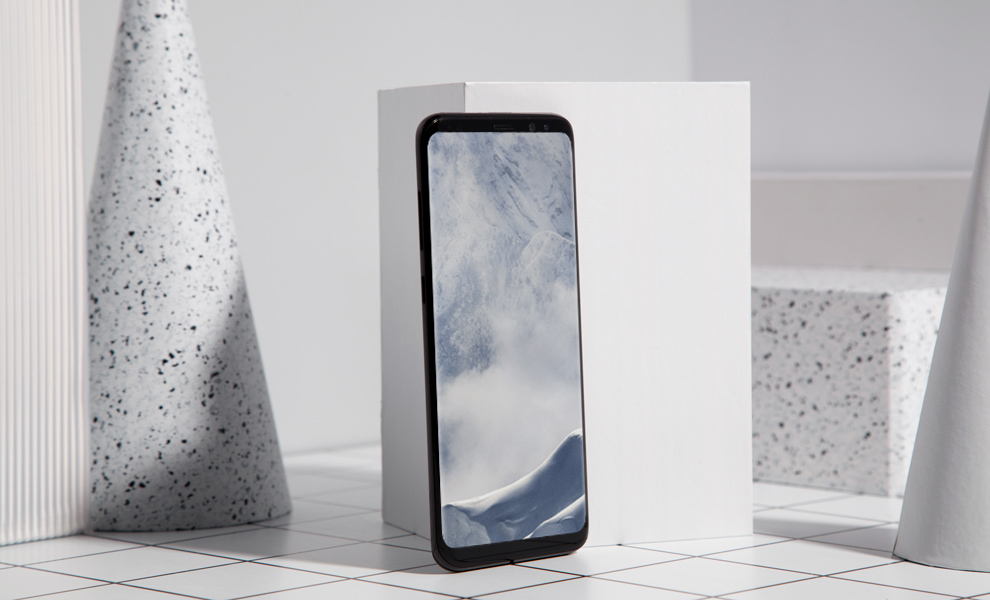
It was a "big bet," in the words of Justin Denison, senior vice president of product strategy and marketing at Samsung Electronics America, and that gamble paid dividends for the smartphone maker. But the move to the Infinity Display was fraught with challenges along the way.
"You have to continually evolve the materials you're using, [like] the metals and alloys around the edge of the device, to make sure they're sufficiently strong," Denison told Tom's Guide. You're strengthening the glass itself, moving to Gorilla Glass 5. … You're taking components that the consumer never sees, like the display driver and antenna around [the] inside [of] the phone cavity, so they can still function properly, but frankly get out of the way so that you can make more space for the display to curve all the way around the edge."
The Galaxy S8's Infinity Display didn't just improve things for Samsung customers, it led HTC and OnePlus to send their flagship phones back to the drawing board.
As a result, the S8's bezels are 50 percent smaller than those on the S7, while the S8 has a 36 percent larger screen area. That translates to one-handed operation that's significantly easier, and a form factor that's roughly the same as that of the S8's predecessor, despite the new phone's much larger display. The curve also enables useful UI layers and shortcuts like Apps Edge, a feature exclusive to Samsung's flagships.
But, of course, all the elbow grease used to capitalize on display real estate came at a price, and a significant one: the home button. With no room left on the device's front, Samsung developed a two-pronged approach: a digital home button with intuitive haptic feedback to replicate the tactile sensation of a real button, and relocating the fingerprint sensor around the back (although we wish the company had opted for a more-central placement).
"Taking away the physical home button you would say was a little bit of a risk," Denison said, "but it was a risk we thought was worth taking. … [Developing the haptic feedback] was something that frankly required a lot of simulation and trial and error along the way. We were constantly designing prototypes and doing various testing on usability and durability."
The Infinity Display didn't just improve things for Samsung's loyal customers, either; it sent ripples across the industry. Both HTC and OnePlus were sent back to the drawing board, revising their existing flagships to roll out full-screen versions later in the year. Google reportedly deviated from its original plan for the Pixel 2 XL by spurning HTC to partner with LG, which offered a design with much slimmer bezels for that 6-inch phone.
Samsung's achievement was the culmination of a focus on display innovation that goes as far back as the original Galaxy S, the first touch-screen smartphone with an AMOLED panel.
"We think screens are the primary window to the phone experience; that's the area we've invested [in] trying to build design leadership and manufacturing leadership, and we've been quite proud of the success and acceptance of that [investment] in the market," Denison said. — Adam Ismail
DJI Spark Drone: No Controller Required
Short of being trained by a Jedi, this is the closest you'll come to using the Force. The DJI Spark, the company's newest and smallest drone, doesn't need a controller or a smartphone to fly. All you need to do is wave your hand.
Hold your palm out, and you can direct the Spark across the sky, have it take a picture or video of you, and get it to follow you as you walk around. Oh, and it'll land on your hand, too.
But getting the Spark to do all this wasn't as easy as, say, flapping your arms.
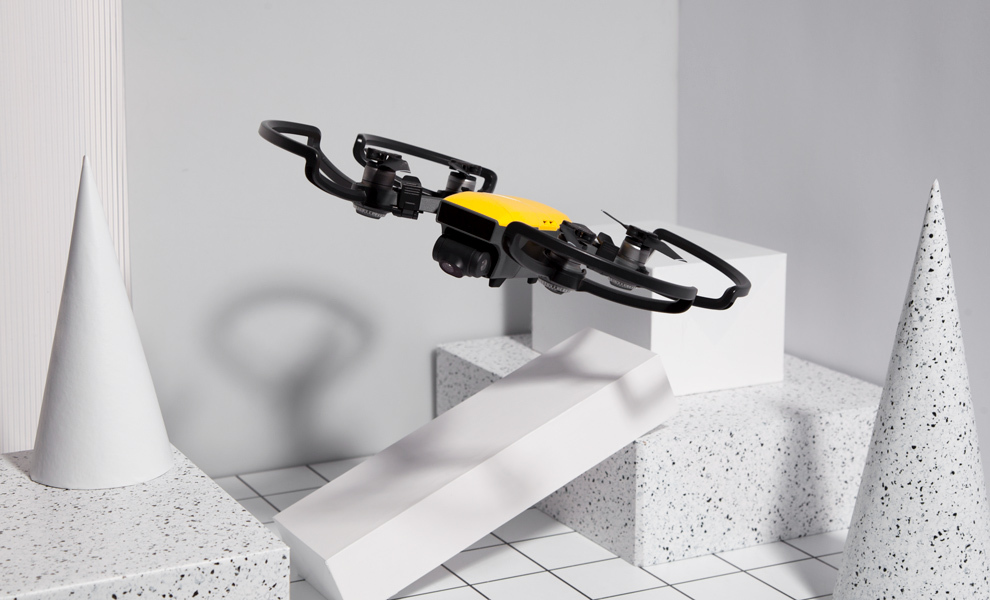
Back when the company was launching the Mavic Pro, DJI's designers were trying to make an even smaller drone, but they wanted the Spark's distinguishing feature to be more than just its size. "Then, we asked, 'Besides the hardware and software, how can we make the drone easier to use?'" said Paul Pan, senior product manager at DJI.
The project team recognized that actually piloting a drone was still a major challenge for most consumers. "We then went from an iteration of a simpler remote controller to finally no controller at all," Pan said.
DJI then looked for gestures that people typically make, including those in everyday life and in the movies. Working within the confines of the Spark's 3D sensing system — which helps it avoid trees and other obstacles — DJI tried numerous iterations, as the drone had to account for different pilot body types, control habits and even the drone itself.
"Giving a gesture to control the drone makes the drone move and simultaneously affects the recognition input because the pilot's palm and body are moving as well," Pan said. After 10 months of experimentation, Pan said, "the Gesture Control function was born."
While the gestures are still fairly limited now, we can't wait to see what else will take flight. — Mike Prospero
Hellblade: An Authentic Descent into Madness
From a distance, Hellblade: Senua's Sacrifice ($30, PS4 and PC) looks like a fairly straightforward action-adventure game, packed with swordplay, puzzles and a harrowing hellscape of demons. But once you put your headphones on and sink your teeth into developer Ninja Theory's interactive journey, it'll quickly hit you: That harrowing hellscape is the inside of someone's mind.
The first independent release from the action-game veterans at Ninja Theory, Hellblade places players inside the head of Senua, a Celtic warrior experiencing extreme psychosis. It successfully tackles the sensitive subject matter of mental illness through a moving, multihour journey, which makes brilliant use of audio and visuals to bring to life the kinds of demons that many real people live with every day.
"At the very beginning, we knew that tackling mental health and psychosis would be creatively exciting, and socially, it would be incredibly dangerous," said creative director and studio co-founder Tameem Antoniades.
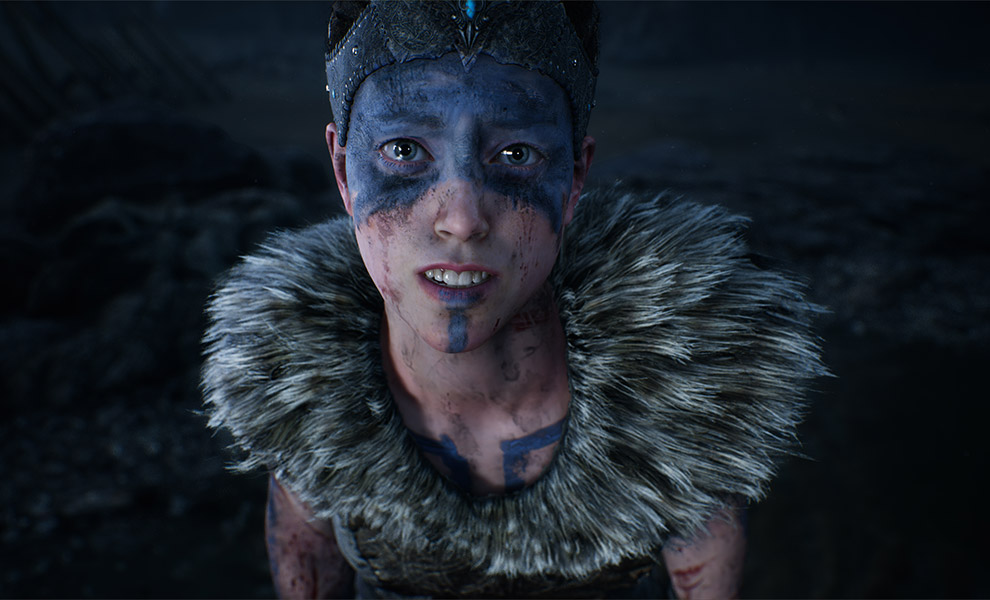
To get it right, the studio worked with University of Cambridge neuroscience professor Paul Fletcher, biomedical research charity Wellcome and a variety of "service users," folks who have experienced extreme mental illness and who were willing to share their stories and give feedback. The next challenge was building the in-game technology that would bring Senua's experience to life in a way that would do those users justice.
There's a reason Hellblade asks you to play with headphones on as soon as you boot the title up: One of the game's biggest innovations is its use of binaural audio, which Ninja Theory employs to faithfully re-create the feeling of having voices inside of your head.
"What a binaural mic does is simulate how we hear the world. It's just simply two microphones attached to two rubber ears. And it's only when you experience it yourself that you realize just how much we're missing with generalized, procedural 3D audio" said Antoniades.
Hellblade: Senua's Sacrifice struck a deeply emotional chord, both with folks experiencing mental illness and those hoping to understand it.
Equally striking are the game's visuals, which feature incredibly detailed environments, clever use of full-motion video and one of the most realistic-looking main characters we've ever seen in a video game.
To make Senua look true to life under a tight budget, Ninja Theory built its own motion-capture studio and collaborated with Cubic Motion, 3Lateral and Epic Games, three companies that were willing to help out in order to fine-tune their own performance-capture and graphics tech.
"We had this massive, four-way R&D thing, all of us just working out of goodwill. And we pushed the performance technology forward," said Antoniades.
This collaboration led to a breakthrough: real-time performance capture. Ninja Theory could translate a live motion-capture scene into a complete in-game cinematic squence within minutes. The process usually takes months. Ninja Theory demonstrated the tech live at last year's Siggraph conference, beating out film giants such as Pixar and Industrial Light & Magic for the event's real-time graphics award.
"Somehow, through the most extreme budget constrictions we've ever had, we've done more with this technology than I think anyone ever has," said Antoniades.
That impressive technology all coalesced into a cohesive, immersive and incredibly striking final product, which got massive critical praise when it launched in summer of 2017. More importantly, it struck a deeply emotional chord both with folks experiencing mental illness and those hoping to understand it.
"The people who really connect with Hellblade get a sense that they know something they didn't know before. Something deep about the mind, about madness, about suffering. And they get some empathy from that," said Antoniades.
"I think that leads you to understand that games are a really important medium for humanity." — Michael Andronico
Nvidia Shield: One Box to Rule Them All
The 2017 iteration of the Nvidia Shield ($179) wants to be all things to all people ㅡ and it succeeds. The Nvidia Shield is not just a 4K HDR streaming player; it's also a game console, a digital assistant and a smart home hub.
"Today's living room is typically cluttered with many devices," said Chris Daniel, the Nvidia Shield’s director of product management. "Our vision with Shield is that all of those experiences become 'apps' on a single, high-performance device."
The Nvidia Shield features a fully integrated Google Assistant. Just like on a smartphone, Google Assistant on the Nvidia Shield can tell you about traffic, look up sports scores, answer general trivia questions, add items to a to-do list, launch apps, search for streaming content and even control smart home gadgets. (The device supports Samsung SmartThings, which is the most diverse and robust smart home hub on the market.)
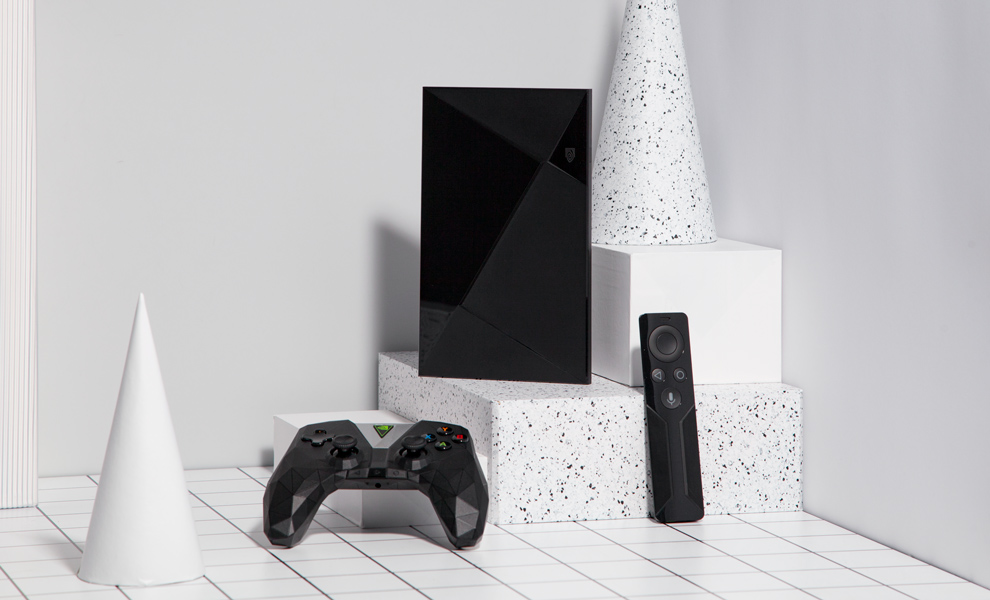
"We placed a technology bet when designing our new game controller that hands-free assistants would become a must-have in the living room," Daniel said. "At the time [we created the first Nvidia Shield], Google Assistant didn't even exist."
The decision to incorporate Google Assistant into the Nvidia Shield was natural, as the Shield runs on the Android TV OS. Managing content on this set-top box is just as easy as using an Android phone — and its visual element helps distinguish it from smart speakers, like the Amazon Echo or Google Home.
"You get access to your same Google Assistant with personal calendar, photos, commute information and more," Daniel said. "Ask your Google Assistant for the weather, and you see a five-day visual forecast, something you won't get from a stand-alone smart speaker."
Listening to customer critiques was also vital. Nvidia charged too much for the 2015 Shield's accessories: $30 for a stand and $40 for a remote control, which didn't come with the system.
"Many family members weren't comfortable using the game controller," Daniel explained. "In this year's model, we include the media remote as a standard accessory in the box. … We learned a lot from the first Shield and incorporated those learnings into the current model." — Marshall Honorof
Threadripper: AMD Rips the Competition
For years, consumers, analysts and media alike have labeled AMD as a maker of midrange and lower-tier processors and GPUs. Hell, even AMD seemed to accept its perceived place in the grand scheme of things. But thanks to the work of a team of engineers who weren't afraid to think outside the box, AMD is the proud creator of the Ryzen Threadripper processor, which is one of the most powerful desktop CPUs on the market.
Available in various tiers (1900X, 1920X and 1950X), Threadripper has effectively raised the bar for high-performance PC components. The premium 1950X CPU packs a whopping 16 cores and 32 threads, but all Threadripper processors are overclockable and feature an unheard-of 64 PCIe lanes. Best of all, these massive chips are hundreds of dollars cheaper than their Intel counterparts.
"We went from a company that delivered midrange and good mainstream value solutions to not only competing, but to actually offering the highest-performing processor you can buy,” said Don Woligroski, global marketing manager for desktop processors at AMD.
It's that time as a value provider that makes Threadripper such a success story. Instead of disabling or omitting features from its chips, AMD gives you access to everything at reasonable prices.
Woligroski explains: "One of the coolest things for me is that you can buy the lowest-end Threadripper, the 1900X, for $550 or so, and Intel's $2,000 Core i9-7980XE can't touch it when it comes to I/O (input/output), and that's because we came from this place where we just want to give people all the stuff we can give them.”
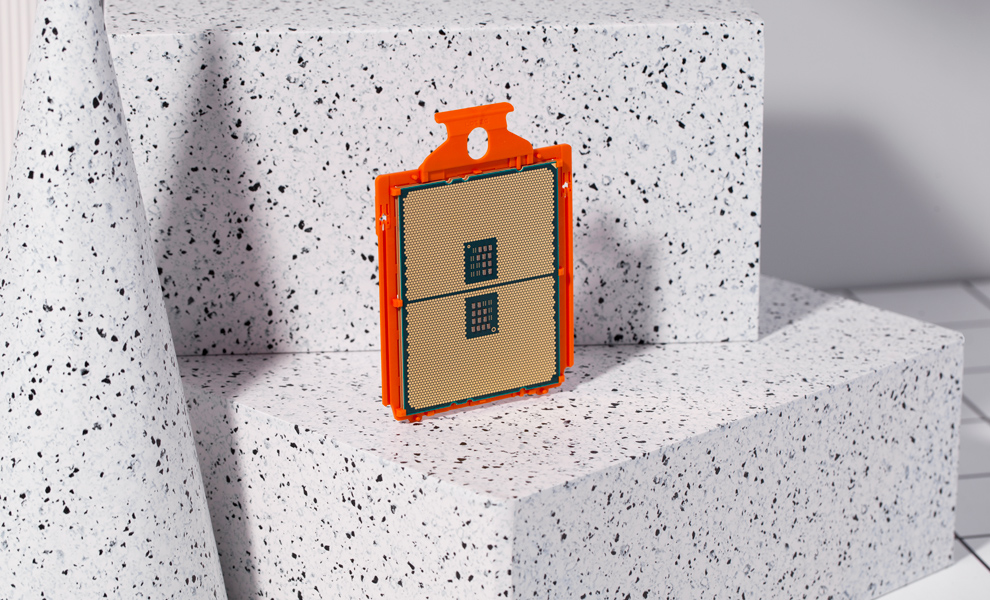
However, Threadripper almost didn't happen. A group of developers worked on the chip as a side project in 2014, and AMD had no plans to enter the high-performance space. But a conversation in a cab during Computex between Travis Kirsch, director of client product management, and Jim Anderson, senior VP and GM of the computing and graphics business group, got the project greenlighted. And AMD was off to the races to bring Threadripper to the masses.
"For us, we really had a lot to prove, and I think it took people a few months to realize we weren't overpromising," Woligroski said. "It turned out that we were underpromising and overdelivering. … It helped us get our swagger back. I think people take us a lot more seriously because of the existence of Threadripper, even though Ryzen 7, Ryzen 5 and Ryzen 3 are such great products."
But AMD's biggest challenge by far is getting consumers to understand exactly what Threadripper can do. "Most people will say, 'Oh, I've got a Threadripper, I can render faster,' said Woligroski. "It's like, no, man, you can't just render faster, you can render and you can encode something at the same time and you can play a game at the same time and you've got no lag."
One thing is clear: AMD has raised the stakes in the processor market, and it couldn't be more excited.
"I love any kind of leapfrogs in the industry, where one side gets ahead of the other, be it hardware or software, and then the other side scrambles to catch up," said Woligroski. "And that's really exciting; that means we're pushing something and we're making a meaningful difference and the competition responds and everybody wins in the end." — Sherri L. Smith
reMarkable Tablet: The Write Stuff
The reMarkable is a specialized $599 tablet for people who love to draw and write, as it recreates the pen-and-paper experience to an impressive degree with its felt nub and proprietary display. The Apple Pencil may have less latency, but pushing its rubber nub against the iPad's glass pane simply doesn't feel as natural as this startup’s slate.
The company's CEO, Magnus Wanberg told us he came to the idea because, while paper "is a beautiful material, it's hard to organize, hard to share and easy to lose track of."
After deciding the slate should use an E Ink-based digital paper display — the kind in Amazon's Kindles — his team reached out to the E Ink company in late 2013, and "told them about our vision for this beautiful product that would give digital superpowers to the paper writing experience that we love."
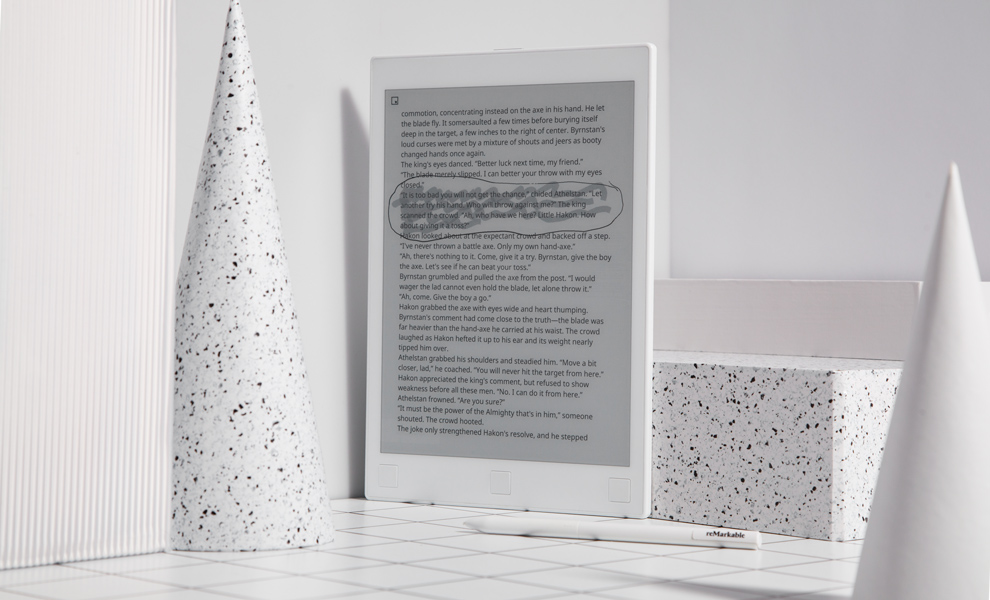
"E Ink said, 'Yeah, great idea, but digital paper is inherently not fast enough for writing,'" because the pause of turning a page on a Kindle is too long, and doesn't suffice for the drawing experience. After spending two years working on the latency problem, Wanberg and his team returned to meet with E Ink in Taiwan in 2015.
"We showed them two units: one with basic software and another featuring our Canvas technology" (its secret sauce of five proprietary tools). "Instead of giving a walkthrough, we simply asked them to write on each," and E Ink saw that the difference was "night and day."
One week later, Wanberg received an email from E Ink, saying that this was a huge technological breakthrough in digital paper. “Whatever you need, we'll build it,” the note said.
The critical consensus has been strong for the tablet, which many — including our sister site Laptop Mag — have praised for bringing the pen-and-paper experience to the digital age. — Henry T. Casey
Razer Kiyo: Lights, Camera...
The Kiyo takes extraordinary photos, but it's the 12 LEDs that fit in a light ring around the camera for easy, bright lighting that make this device so special.
"Working closely with a wide range of grassroots streamers and top broadcasters like Jericho, IncredibleOrb and FazonHD, we noticed that the top ranks had expensive and complicated lighting setups, whereas casual streamers usually stuck to simple, inexpensive camera setups," said Jeevan Aurol, product marketing manager at Razer.
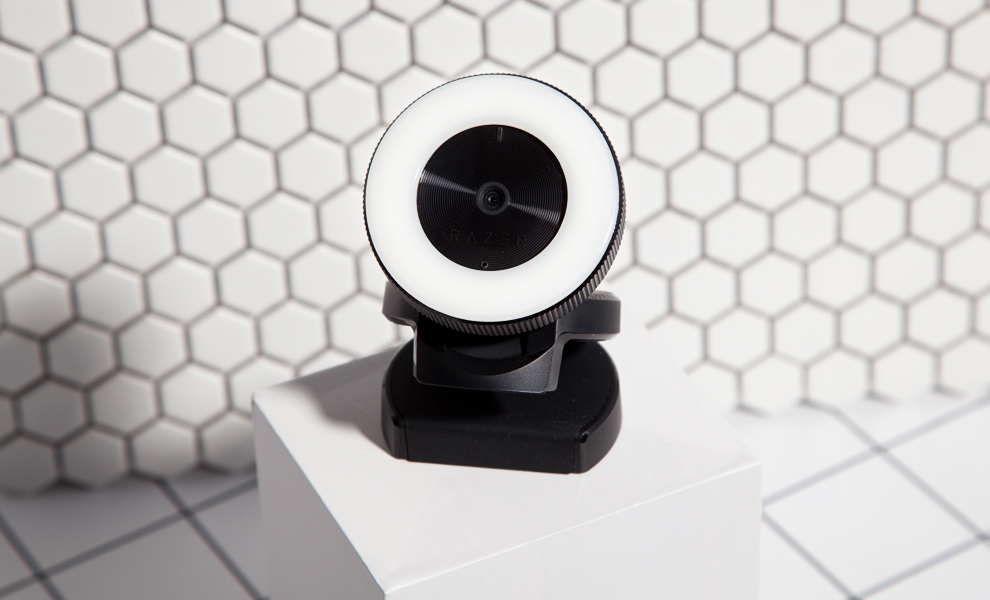
Razer went through a process to make sure the Kiyo ($99) would brighten up any streamer properly. Aurol said Razer tested a variety of arrays of LEDs, brightness levels and color temperatures and found that the "natural lighting feel" was the best, on average, with a variety of skin tones.
The Kiyo's other innovation is its portable, cylindrical design that allows it to be placed just about anywhere.
"[We] focused heavily on the hinge stand design and thought a lot about the different ways that streamers set up their cameras: on the top of their monitors, mounted on tripods or positioned on tables," Aurol said.
As we said in our Kiyo review, a single light ring isn't the same as a full setup, but this peripheral brings studio-like lighting to a lot of people for a reasonable price. — Andrew E. Freedman
Amazon Echo Show and Spot: Alexa Grows Up
At around this time last November, Amazon had just three Alexa-enabled products—the Echo, the Echo Dot and the Tap—and just over 3,000 skills. Fast-forward a year, and the company now has twice as many devices (with another on the way) and more than 27,000 skills in its catalog.
And don't forget the various Fire TV devices, tablets and dozens of third-party gadgets, from smartphones to speakers to thermostats, that also have Amazon's assistant built in.
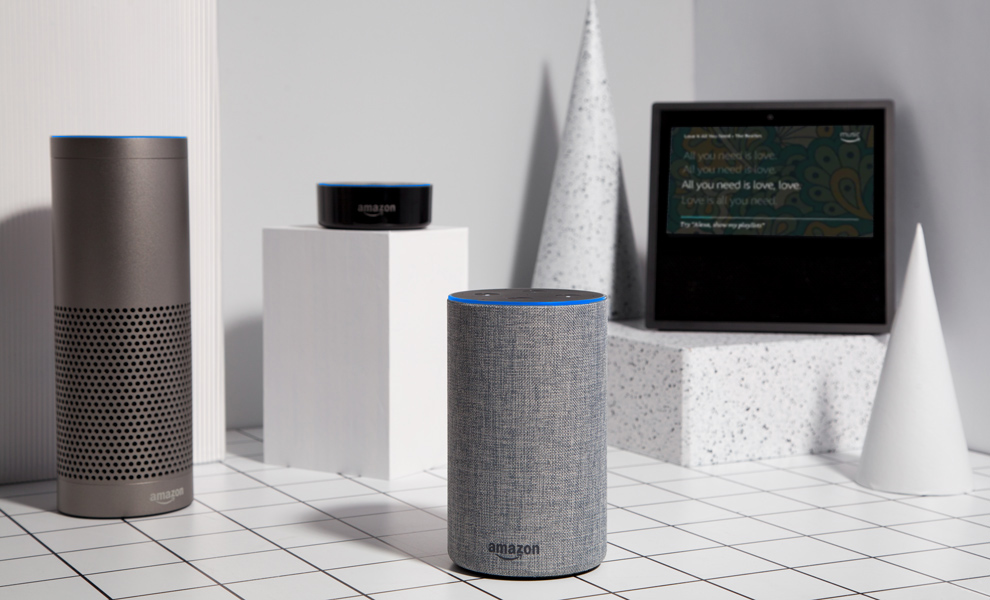
What's more, Alexa devices can now do more than they could a year ago, such as look at feeds from security cameras, play the same song throughout your entire house, and call each other — even if one is on the other side of the country.
Ironically, this explosion of both hardware and software was borne out of a desire to simplify the smart-home experience for consumers. "We always try to come up with tenets that will help guide us with our priorities," said Miriam Daniel, the product management director for Alexa experience and devices. "Every new idea we think about, we think what problem does this solve, or how does it improve our customer's lives? How does it remove friction?"
Amazon started thinking about the Echo and Alexa nearly five years ago. Trekkies all, Daniel and her team wanted to replicate the show's experience of being able to just talk to the ship's computer, wherever they happened to be. "We wanted to bring that simplicity of voice," she said.
"We inventoried what it took to set up a smart home device, and it was like 15 steps. And we said we've got to solve that friction problem, which is how the Echo Plus was born." — Miriam Daniel, product management director, Alexa experience and devices
After the release of the first Echo products, Amazon began collecting feedback from users as to what could make their devices, and Alexa, better.
For example, Amazon was pleasantly surprised by the number of consumers who were using the Echo to control smart-home devices, but that getting everything connected was confusing. "We went and inventoried what it took to set up a smart home device, and it was like 15 steps, about 30 different clicks, two apps, two devices — it wasn't for the faint of heart," Daniel said. "And we said we've got to solve that friction problem, which is how the Echo Plus was born."
When Amazon launched the Echo Show, it was in response to customers who wanted a visual confirmation of things they were saying and doing with Alexa. Yet, Daniel said that the team was focused on making sure that the Show was still a voice-first device. Being able to just fall back to a primarily touch experience would turn the Show into nothing but a glorified tablet.
The Echo Show is too big and too expensive? Welcome, Echo Spot.
Daniel and her team also have to remind themselves that, unlike smartphones, tablets and laptops, Echo devices were designed to be shared. "In this day and age when every device has become a personal device, and people are heads-down into their personal electronics, our tenet was to seek out the use cases that would bring back the family time, the communal experiences back into the home."
This is evident in the hyper-attention that Amazon spends on the performance of the far-field microphones in Echo devices — and how readily Alexa will respond, in the same measured tone, to shrieking children asking the most inane questions.
Along with the hardware, Amazon has a team working to make Alexa seem more human. The company is seeing that customers are interacting with the assistant as if it were a friend, a companion, colleague, family member, versus just treating it as a piece of technology.
"The other day, I actually got a letter in the mail where a customer wrote and said, every time I talk to Alexa, I thank her, and I wish she would say 'You’re Welcome." And she was talking about a continuous interaction. So we get tidbits like that all the time, where customers want Alexa to have more of a personality."
"[Alexa] didn't come together because customers said 'we want to talk to technology,'" Daniels said. "It came because we had a vision of how to simplify the life around us." — Mike Prospero
Nintendo Switch: The Anti-Console
You're playing Super Mario Odyssey on your couch, getting lost in the game's gorgeously inventive 3D worlds on your big-screen TV. There's just one problem: You have a big cross-country flight coming up in a few hours, and it'll probably be days before you get to resume your adventure to save Princess Peach.
And then it hits you:
You pull the Nintendo Switch out of its dock, throw it in your bag and hop on the plane. Without skipping a beat, you're back to fighting Bowser and collecting moons, this time on the system's beautiful 6-inch display, all while you float tens of thousands of feet above the ground. This is the magic of the Nintendo Switch.
"When playing a video game, it’s a great feeling to be totally immersed in the experience. Often times you don’t want to stop playing," said Charlie Scibetta, senior director of corporate communications at Nintendo. "But with traditional consoles... there inevitably came a time when you had to move on just from a practical standpoint. That was the limitation we wanted to overcome with Nintendo Switch."
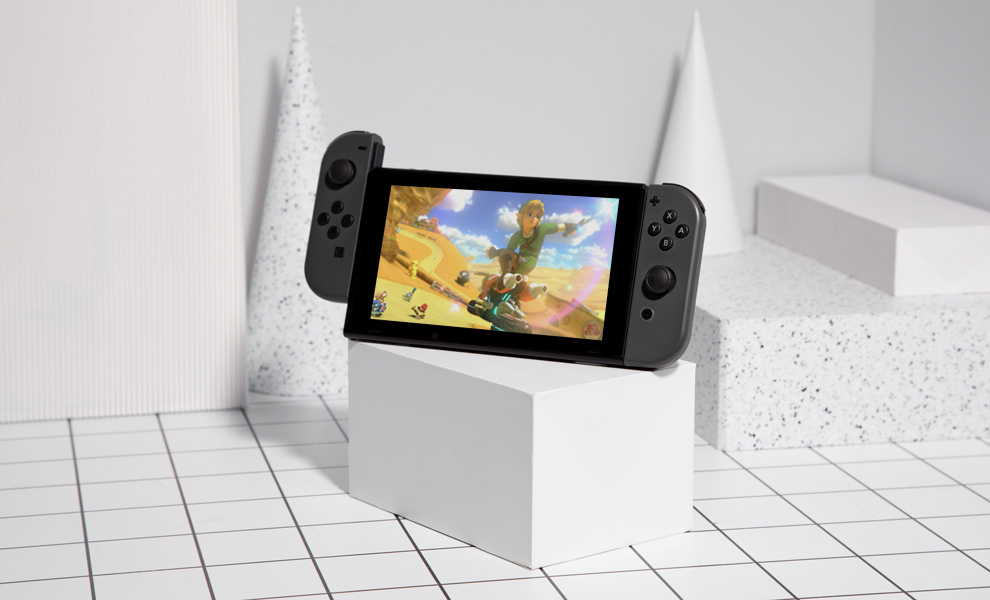
The Switch is the year's most innovative gaming gadget because it manages to deliver on a simple-but-unprecedented promise: a home console that you can play on-the-go. With its detachable Joy-Cons and its ability to be propped up on a table or gripped like a handheld, the Switch is changing how, and where, we play.
Much of what makes the Switch special lies in its versatile Joy-Con controllers. You can attach them to the Switch to use Nintendo's console as a handheld, pass one to a friend for instant multiplayer gaming, or flail them around for motion-controlled games like Arms and 1-2 Switch. They're key to the Switch's ability to act as both a portable and home console, and feel far more practical than the gimmicky gamepads of Nintendo's past.
But a cool piece of hardware is useless without great games to play on it, and Nintendo's first-party output for the Switch represents some of its most creative work yet. Super Mario Odyssey and The Legend of Zelda: Breath of the Wild are already hallmarks of their respective franchises, each delivering dynamic, lively worlds and exciting mechanics that push each series forward.
"With traditional consoles... there inevitably came a time when you had to move on just from a practical standpoint. That was the limitation we wanted to overcome with Nintendo Switch." — Charlie Scibetta, senior director of corporate communications, Nintendo
Equally impressive is the Switch's third-party library, which ranges from beloved indies like Shovel Knight to big AAA games such as Skyrim and L.A. Noire. Sure, you can play Rocket League and Doom on other platforms, but only Switch lets you play them in a handheld format.
"The Nintendo Switch is appealing to developers because they have bought into the same value proposition that gamers have – a play anywhere, with anyone, whenever you want game-play dynamic," said Scibetta.
But while the Switch's game lineup is fantastic, perhaps the biggest reason Nintendo's new console is thriving is the sheer simplicity of it. Part of why 2012's Wii U was a failure was the clunkiness of the system, which relied on a bulky tablet controller that had to be tethered to the console at all times. The Switch condenses that idea into a much more compact and portable piece of hardware, resulting in a level of pick-up-and-play simplicity that brings Nintendo's glory days to mind.
"Ever since the first video about Nintendo Switch debuted last October, people seemed to immediately 'get it,'" said Scibetta. — Michael Andronico
iPhone X: A Vision Perfected
The iPhone X isn't the first phone to integrate technologies like OLED or facial recognition — it simply executes those features better than the competition. At the same time, the processor inside the iPhone X is miles ahead of anything from the Android camp.
There are three advancements — the Super Retina Display, Face ID and the A11 Bionic chip — that combine to make Apple's flagship the most innovative product of the year.
The first thing you notice when you pick up the iPhone X (other than its lack of bezels) is how vibrant its Super Retina Display is. Despite using a Samsung-supplied OLED screen, it's clear that Apple engineered the hell out of this panel to leapfrog its foes. In fact, in side-by-side comparisons with the Galaxy Note 8 and Google Pixel 2 XL, everyone on our team of editors and writers preferred the iPhone X's screen, thanks to its more realistic-looking hues, higher brightness and wider viewing angles.
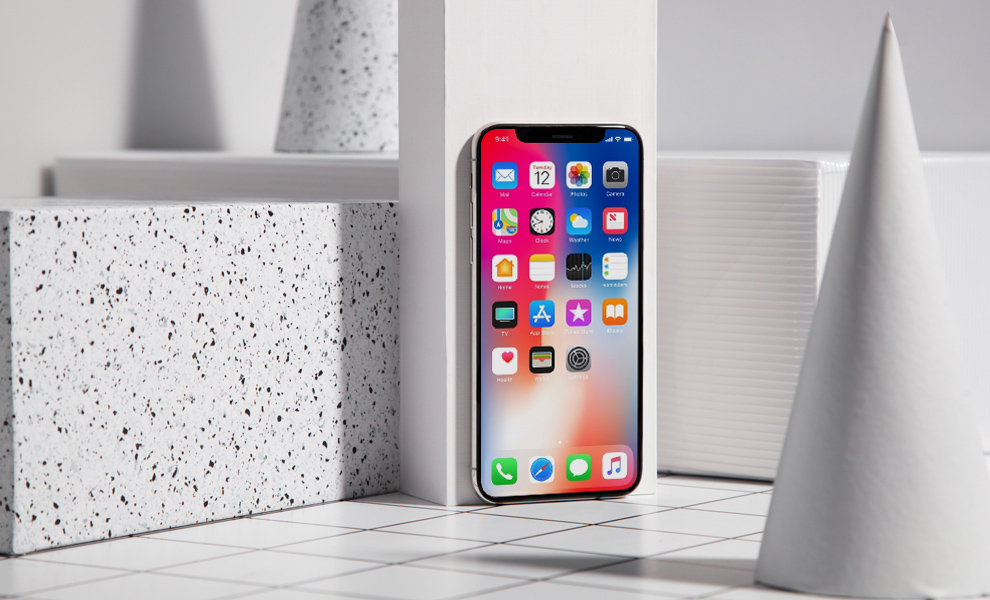
"The color accuracy is incredible; that's one of those things that OLED didn't knock out," said Greg Joswiak, vice president of product marketing for Apple. "The colors had been wrong, oversaturated."
To improve on previous OLED implementations, Apple brought in its own color-management system to ensure that the iPhone X produces the most accurate colors possible. The team behind the Super Retina Display also developed a unique folding-panel design, stacking the circuits so it could get as tight to the bezel as possible.
Last but not least, Apple did a ton of work at the subpixel level, so the iPhone X's screen could display really crisp lines along with beautifully rounded corners. We could see the difference when we looked at the same high-resolution image of a docked ship on the iPhone X and other OLED-screen phones. Images on the iPhone X looked sharper.
"We had to do a lot of engineering to come up with panels that were better," said Joswiak.
The iPhone X also introduces a new way to unlock your phone in Face ID, which leverages the new TrueDepth camera system up front. There's a ton of tech packed into that small area on the front of the phone, including an infrared camera, a flood illuminator, the 7-megapixel front camera and dot projector. That's in addition to the proximity sensor, ambient-light sensor, speaker and microphone.
"Forget all those stories you heard about us trying to map fingerprints into the back. We had a line of sight on how to do real facial recognition, in a way never done before." — Greg Joswiak, vice president of product marketing, Apple
Apple has taken some criticism for the notch that swoops down from the top of the screen, but it serves a real purpose by containing all that tech.
"With all of those components, this is one of the most densely packed technology areas I think we've ever done," said Joswiak. "It's one of the most sophisticated pieces of technology we've ever done in such an incredibly small space."
That dot projector shines 30,000 invisible dots on your face in order to create a 3D map. This TrueDepth system then feeds that map to the A11 Bionic chip and does all the math to identify that it's you — almost in real time.
The result is facial recognition that works as reliably in bright light as it does in the dark. And, unlike other phones with facial recognition, you can't fool this one with a photograph. Face ID is so good, in fact, that Apple didn't even bother with a fingerprint sensor.
"Forget all those stories you heard about us trying to map fingerprints into the back," Joswiak said. "We had a line of sight on how to do real facial recognition, in a way never done before. It would be really hard to do, but we just didn't want to do it the way others had, which could literally be spoofed with a picture."
That brings us to the brain of the iPhone X, which is the A11 Bionic chip. Also found in the iPhone 8 and iPhone 8 Plus, the A11 Bionic is the fastest mobile CPU we've ever tested — by far. When transcoding a 4K video clip, for instance, the iPhone X took just 24 seconds, compared to nearly 3 minutes for the next-fastest Android phone.
The A11 Bionic packs two performance cores that are up to 25 percent faster than the cores in the previous A10 Fusion chip, along with four high-efficiency cores that are up to 70 percent faster. A second-generation performance controller allows the iPhone X to run all of the cores together at the same time, which is a first. This comes in handy when the phone is running demanding iOS augmented-reality apps.
But this chip isn't just about pure speed. It's about enabling features that simply weren't possible before. For instance, the neural engine inside the A11 Bionic enables the iPhone X to instantly recognize your face, performing 600 billion operations per second. This engine also fires up the cute new Animoji, analyzing and tracking your facial movements in order to map them to animated characters.
"Our SoC [system on a chip] team worked hand in glove with the rest of our organization, both hardware and software, to create chips that are perfectly suited for what we're trying to do from a features standpoint. That's huge," said Joswiak.
When Apple introduced the first iPhone, it took a lot of flak for not including a physical keyboard, but the company's actual vision was to eliminate buttons. Ten years later, the iPhone X nearly achieves that, and Apple could care less if others beat it to the punch when they're offering features.
"It doesn't matter if you're first to a general idea, it's about being first to making it fantastic, and that's what we try to do," Joswiak said. "Whether it's the chip team working with our hardware team or our software team with our human interface team — it is one team here. No one else can match that." — Mark Spoonauer
Image credits: Tom's Guide unless otherwise noted.

Tom's Guide upgrades your life by helping you decide what products to buy, finding the best deals and showing you how to get the most out of them and solving problems as they arise. Tom's Guide is here to help you accomplish your goals, find great products without the hassle, get the best deals, discover things others don’t want you to know and save time when problems arise. Visit the About Tom's Guide page for more information and to find out how we test products.
-
gahmoro The Switch is the device that made me get back to playing games after years. It's marvelous. The iPhone X is also amazing. Great review!Reply
